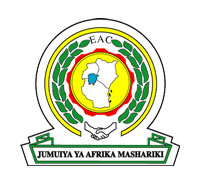

“Everything that we have done up to now has just been the preparation, the work for integration has just begun,” Mkapa said at the official ceremony. “The important goals of the EAC are to improve our economies, quality of life and relations between the three countries,” he said. Technocrats who have been working towards the cooperation have termed it “a new chapter” in which “none of the old mistakes will be repeated”. The “old mistakes” refer to the problems which led to the collapse of the EAC in 1977. East Africa had become ideologically split then, with Kenya advocating capitalism and social interventions, while Tanzania pursued socialism. Besides, mistrust among the leaders mounted especially after Uganda’s former dictator Idi Amin took power by force.
Moi, Museveni and Mkapa had signed the treaty in November 1999 which set out the principles for economic, monetary and political union. It also provided for common action on the movement of people and goods between member countries and on transport, tourism and telecommunications. The treaty calls for common external tariffs and the elimination of international tariffs, the establishment of an East African legislative assembly and of a common customs union.
Rwandan President Paul Kagame and his Burundian counterpart, Pierre Buyoya, also expressed their desire to join the community. However, President Mkapa noted that their admission could only take place once the state of insecurity in their countries had been permanently addressed.
The East African region (Tanzania, Kenya and Uganda) covers an area of 1.8 million square kilometres with a combined population of about 80 million and has a vast potential in mineral, water, energy, forestry and wildlife resources. It also has agricultural, livestock, industry and tourism development. Its people have a common history, language (Kiswahili), culture and infrastructure. The EAC integration was aborted in 1977 after 10 years. Efforts to revive the community began in 1993 with the heads of state signing an agreement to establish a commission for East African cooperation.
United Nations Secretary-General Kofi Annan welcomed the creation of the new association, calling the newly established regional body a “building block” for a future African Economic Community. “The United Nations supports the strong commitment of African countries to multilateralism and initiatives such as the EAC (East African Community) that strengthen Africa’s capacity to meet the challenges of globalisation,” he said.
However, the East African region has had its fair share of disputes and disagreements. The main bone of contention has been the long-held perception by Uganda and Tanzania that Kenya’s economy – mainly the manufacturing sector – was more competitive than theirs despite the fact that it has been declining over the past few years under pressure from imports from the Middle East and inadequate infrastructure. Kenya exports approximately three-fifths of its goods to Uganda and Tanzania and had been facing tariffs of between 10 and 20 per cent before the establishment of the East African Community. However, the EAC is expected to present a good investment platform for both domestic and foreign investors due to their economies of scale. Benefits should also accrue to Uganda and Tanzania, who have, of late, reaped immensely from food commodity supply fluctuations in Kenya.
Participate in THE 15TH KENYA INTERNATIONAL TRADE EXHIBITION
Please visit http://expogr.com/expokenya/
Major categories of this event are:
- Autmotive
- Building & Construction
- Medical & Healthcare
- IT & Telecom
- Printing & Packaging
- Food & Hotel Supplies
- Plastics & Rubber
- Industrial Machinery
- Consumer/ Household
This is great platform to meet importers in Kenya/ East Africa.

Comments are closed.